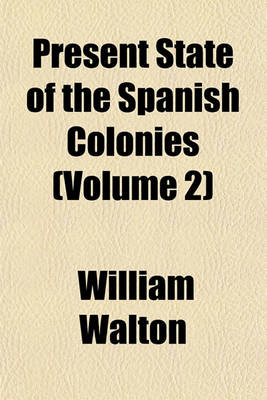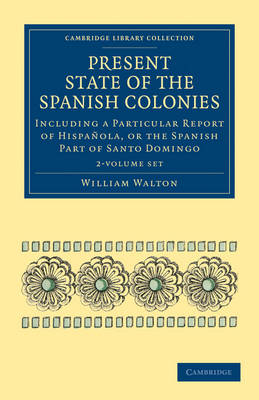Cambridge Library Collection - Latin American Studies
2 primary works • 3 total works
Volume 1
William Walton (?1783-1857) was British agent at Santo Domingo (Haiti), one of the two states on the island of Hispaniola, over which the British had briefly fought with the French before it proclaimed its independence in 1804. Returning to England in 1809 he began to write on Spanish and South American affairs. This work was published in two volumes in 1810. Volume 1 deals with Hispaniola, which was settled by both the Spanish and French, and officially divided in 1697. Haiti was now independent, but the other part (now the Dominican Republic) remained under Spanish control until 1821. Walton discusses the history and geography of the island, and particularly the natural resources and wildlife. The rebellion of Haiti had seriously damaged the economy, which had been thriving, and more successfully exploiting the island's resources than the larger Spanish colony. Walton's object was to encourage the growth of trade between Britain and the region.
Volume 2
William Walton (?1783-1857) was British agent at Santo Domingo (Haiti), one of the two states on the island of Hispaniola, over which the British had briefly fought with the French before it proclaimed its independence in 1804. Returning to England in 1809 he began to write on Spanish and South American affairs. This work was published in two volumes in 1810. Volume 2 examines the Spanish settlements on the American mainland, in California, Texas, Mexico and particularly in South America. Walton first considers the administration of these colonies. He discusses the origins of the native peoples, and the impact on them of colonization; having studied their culture, he believed that in some respects they were more advanced than Europeans. He then discusses the Spanish and Creole inhabitants of South America, and its climate and resources. Walton's object was to encourage the growth of trade between Britain and the region.
William Walton (?1783-1857) was British agent at Santo Domingo (Haiti), over which the British had briefly fought with the French before it proclaimed its independence in 1804. Returning to England in 1809, he began to write on Spanish and South American affairs. The Present State of the Spanish Colonies was published in two volumes in 1810. Volume 1 deals with the island colony of Hispaniola (now divided between the Dominican Republic and Haiti). Walton discusses the history and geography of the island, and particularly the natural resources and wildlife. Volume 2 examines the history and resources of the Spanish settlements in South America, describing the Indian, Spanish and Creole inhabitants and their culture, and the relationship of the colonies with Spain. There is much of interest in his study of the origins and culture of the native tribes, and the impact on them of colonization and religious conversion.


